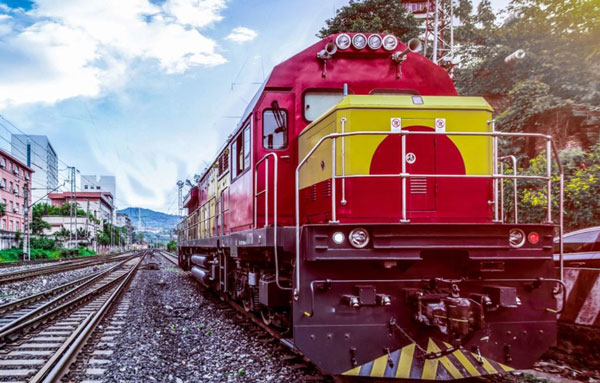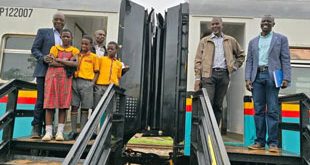
Angola and the Democratic Republic of Congo have handed the Lobito rail corridor rehabilitation to foreign private investors to spur exports of critical minerals required for clean energy and to boost intra-Africa trade.
SPECIAL REPORT | BIRD AGENCY | Until the 1970s, the Lobito rail corridor was one of the busiest transport routes in Africa, linking Southern and Central Africa’s inland markets with the rest of the world and serving as the shortest export route for goods and commodities flowing to Europe and America.
The iconic railway built nearly 100 years ago was part of a vast extractive network facilitating trade in, among other things, copper, cobalt, coal, zinc, lead, timber, sugar, maise, and coffee.
However, after civil war broke out in Angola in 1975, rail operations were suspended by Angola, the Democratic Republic of Congo (DR Congo) and Zambia, and there has been little activity since then.
Now the three countries are joining hands to resuscitate the cross-border railway linking Africa’s mineral-rich countries to the Atlantic Ocean port in a project that will improve intra-African trade and ease the flow of imports and exports.
In early July, DR Congo and Angolan governments officially granted a 30-year concession to the Lobito Atlantic Railways consortium to operate, manage and maintain the line, which will link the Angolan port of Lobito to the heart of DRC’s Copperbelt.
The consortium is led by Singapore-based multinational commodity trader Trafigura and includes Portuguese construction and infrastructure management firm, Mota-Engil, and Belgian railway operator Vecturis. The consortium will invest up to US$555 million in the project.
The countries involved are banking on the booming demand for critical minerals necessary for the world’s transition to clean energy to drive infrastructure investment in the region.
Trafigura said the Lobito Corridor will offer African mineral-rich countries the fastest export route to Europe and the Americas.
“The railway offers the shortest and most direct route to port from the key mining district of Kolwezi in the DRC, where exports of copper, cobalt and other raw materials are growing rapidly,” said Trafigura in a statement.
The International Energy Agency projects that demand for rare earth metals – primarily for electric vehicle (EV) motors and wind turbines – will grow by three-to-seven-fold by 2040. According to IEA data, total demand for copper and rare earth metals will increase by 40%, nickel and cobalt by 60-70% and lithium by almost 90%.
Currently, DR Congo is the world’s largest producer of green metals but the country relies heavily on road transportation for the export of copper, cobalt and other metals, using three routes: to Dar es Salaam in Tanzania, via Beira in Mozambique, or south via Durban in South Africa. However, the routes include cross-border toll gates and roads that are already congested.
A total of US$455 million has been earmarked towards improving the Lobito Corridor – a 1,344-kilometer stretch of the line – while the remaining US$100 million will be invested in a 400-kilometre branch line in DR Congo. In Angola alone, 1,555 wagons and 35 locomotives will be procured.
Additionally, US International Development Finance (DFC) has been conducting due diligence for a potential financing package of U$250 million for the project, according to Africa-focused news platform Engineering News. The DFC’s finance package would be its first investment in rail on the continent. Increasing investment and trade with the continent is quickly becoming a hallmark of the Biden administration.
“One notable project announced by President [Joe] Biden at the most recent G7 meeting in Japan is DFC’s interest in supporting the development of a railway in the Lobito corridor, which will connect the Copperbelt in DRC and Zambia, through Angola, to global markets,” DFC CEO Scott Nathan said during a visit to Botswana this week, according to Engineering News.
With Africa’s export of goods and services making up only a small fraction of global trade, President João Lourenço said the project would help to boost African exports.
“Figures like this show us the importance and necessity of putting our infrastructure at the service of the economic and social development of our countries and our continent,” said Lourenço.
Trafigura Chief Executive Officer Jeremy Weir also said the Lobito railway will catalyse growth and investment in Angola, the DR Congo, Zambia and the wider region.
”It is a vision shared by these countries which have already signed an agreement to accelerate growth in domestic and cross-border trade along the corridor,” said Weir.
There is also a commitment to extending investments on the railway to link up Zambia, with Trafigura indicating a potential of adding 20 more years to the concession.
The presence of Zambian President Hakainde Hichilema during the handover of the project and the signing of a cooperation agreement between the country and DR Congo in April 2022 to facilitate the development of a battery value chain appeared to affirm this.
However, the investment amount towards improving the railway link to Zambia was not immediately disclosed.
****
SOURCE: By Conrad Onyango, bird story agency
 The Independent Uganda: You get the Truth we Pay the Price
The Independent Uganda: You get the Truth we Pay the Price


